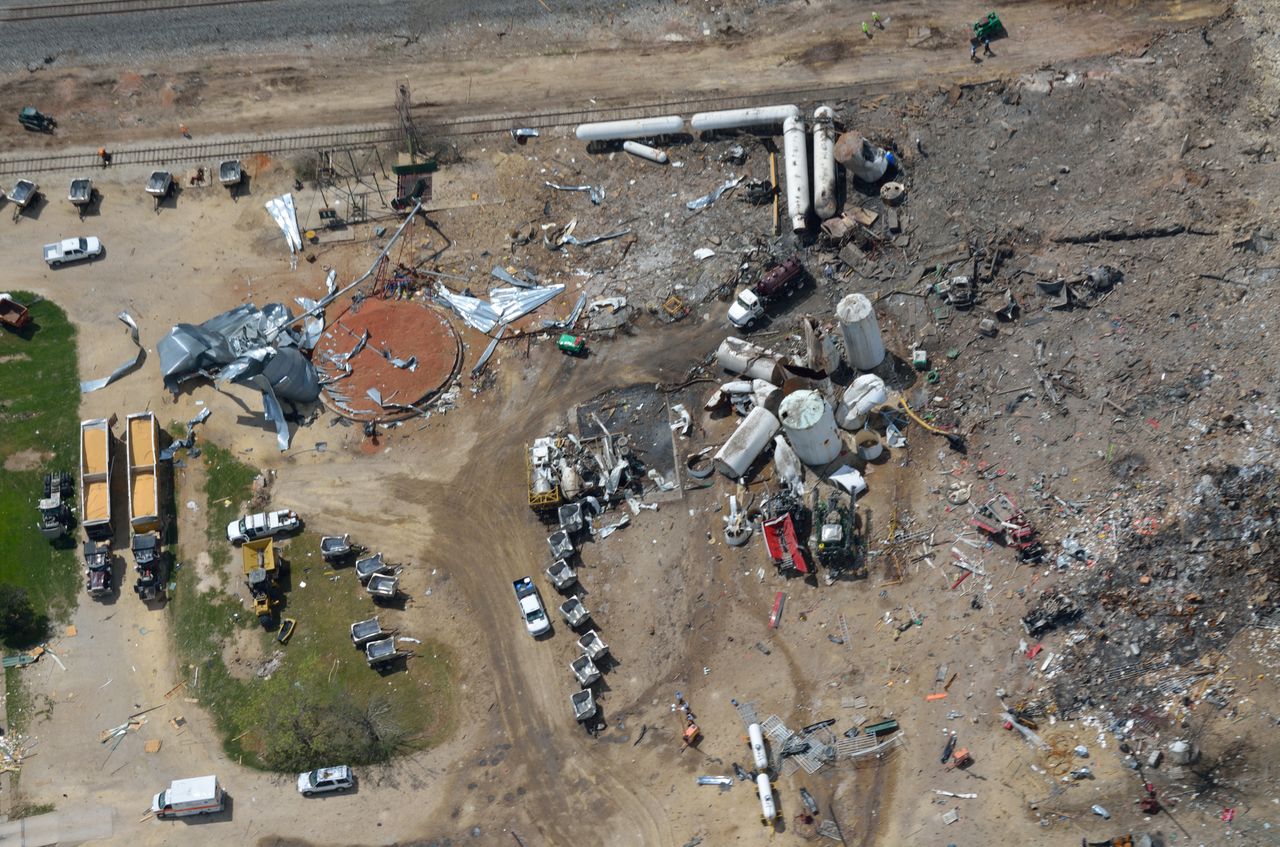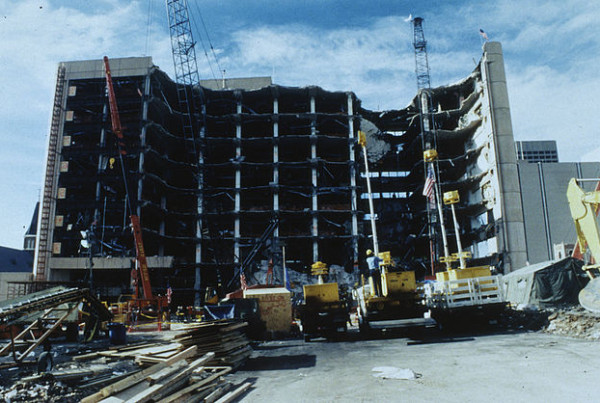Two years ago today, a fire at a fertilizer plant in the city of West, Texas led to an explosion that shook the ground like a 2.1 magnitude earthquake. It killed 15 people, injured many more and left whole blocks of the city in ruins.
The explosion and the devastation left behind temporarily captured the attention of the country. President Obama made a visit and attended a memorial service for the dozen first responders killed during their efforts to stop the fire. But what’s happened since? Has the city rebuilt or are there still areas of devastation?
The Texas Standard’s Laura Rice is in West today near what was ground zero to tell us what’s there now.
“Honestly, it was hard to find exactly where the fertilizer plant was because it’s just gone. There’s just sort of a dirt patch,” Rice says. “There’s a wooden cross across the street.”
Rice also said there’s construction barriers in the area where buildings and homes needed to be rebuilt following the explosion.
A big question on everyone’s mind is where the people who depended on the plant for fertilizer go if it hasn’t been replaced. “I’m told that they’re going elsewhere. They’re finding closer plants,” Rice says. “There are many nearby, as close as Hillsboro.”
Brad Johnson is the general manager of the Northeast Texas Farmers Co-op, which represents more than 7,000 farmers across 10 counties. He spoke with the Standard about the impact of the explosion on farmers and the industry.
“From a northeast Texas standpoint, and actually the state of Texas standpoint, the biggest change that we’ve seen is a local awareness – particularly by first responders and local emergency planning committees – of what is a hazardous material.” He’s talking about ammonium nitrate, which was the cause of the explosion.
Four bills have been proposed in the Texas House to deal with ammonium nitrate. The one that seems to have the most support at the moment calls for increased facility inspections and tighter storage regulations in hopes of reducing accidents in the industry. But Johnson says that might not be the solution.
“It doesn’t make sense to us from a state level or a federal level,” Johnson says. “We agree that there should be more information – and there’s a big different between sharing information and control.”
He emphasizes that the communities where these facilities are located are aware of the danger of the chemicals.
“If I had to change something from the West incident from two years ago, I think that I would focus more of our attention as to why and how it happened,” Johnson says. “We still don’t have the answer to that question…if we knew [that] we could go a long way in this state to putting almost one-hundred percent assurance that it would never happen again.”












